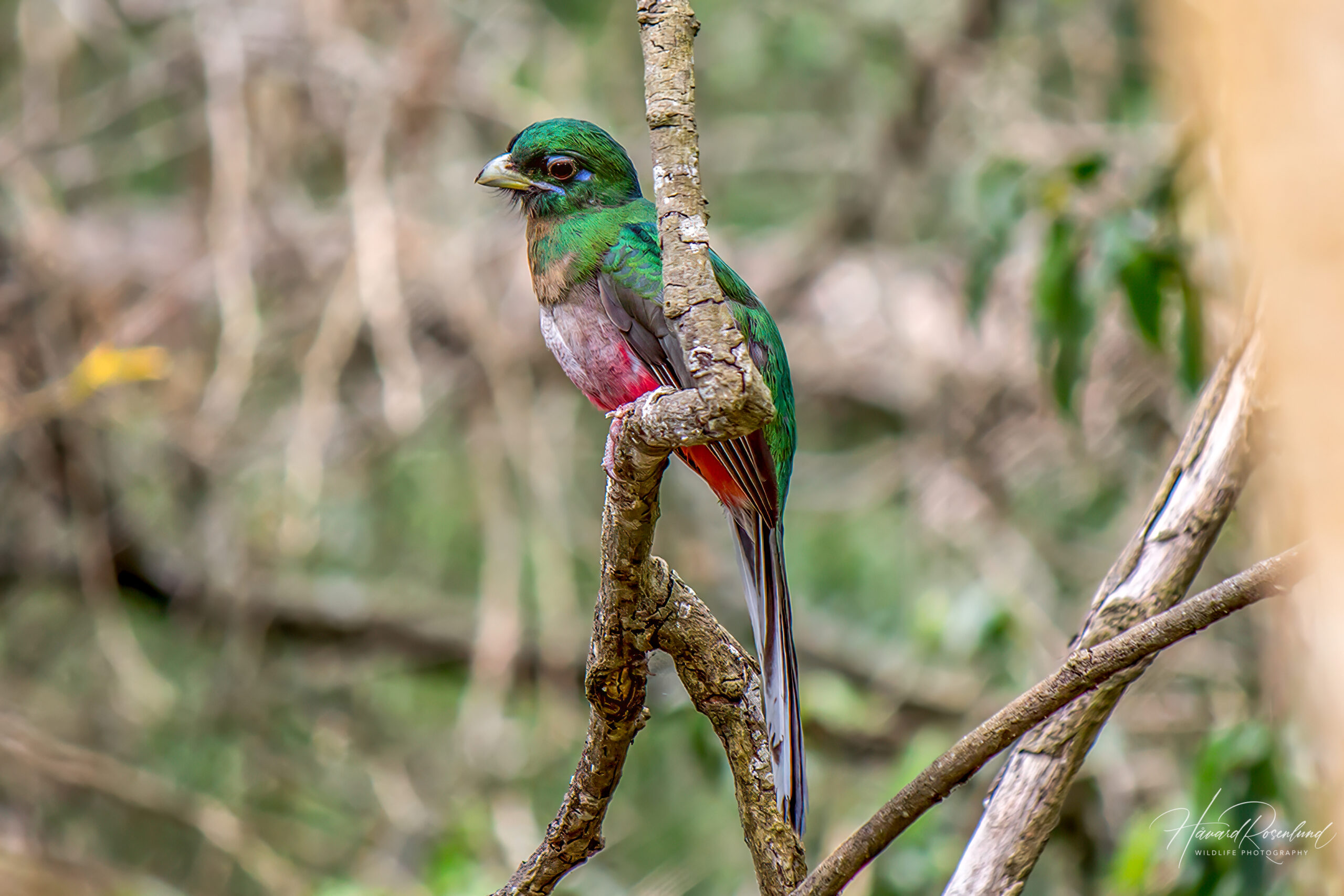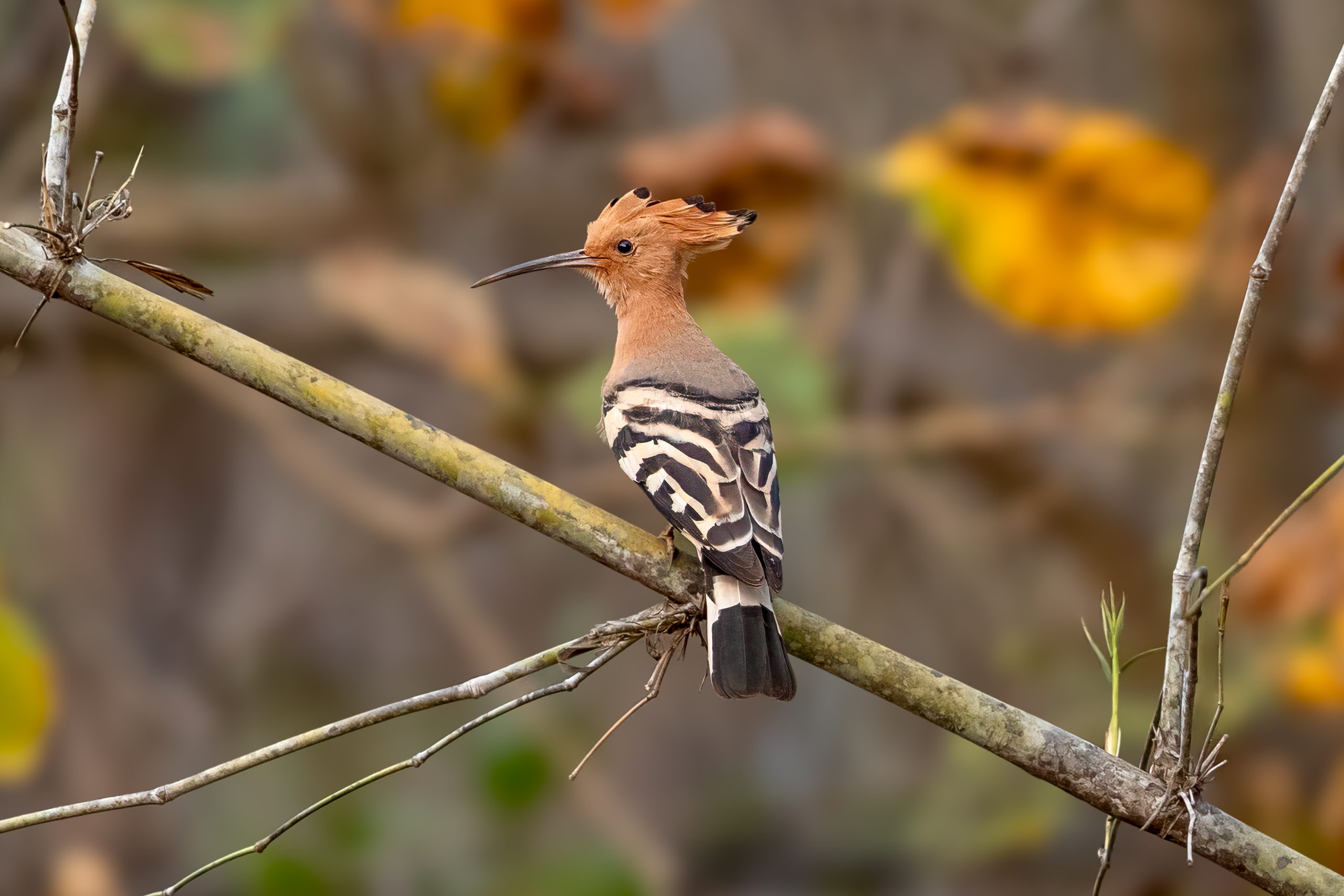Description
The Narina trogon (Apaloderma narina) is a striking bird species found throughout much of sub-Saharan Africa. It is named after Narina, the Khoikhoi mistress of French ornithologist François Le Vaillant, who first described the species in the late 18th century. This bird measures around 32-34 cm (12.6-13.4 in) in length, and is known for its vivid and unique plumage. The most distinctive features include their green upperparts, which shimmer with a metallic sheen in sunlight, and their crimson belly, which provides a sharp contrast.
This is a sexually dimorphic species. Males have a green chest and the entire belly is bright red, and they mostly have greenish-yellow facial markings. Females are only red at the lower part of the belly, and have a brown chest, throat and forehead, and often more bluish facial markings. Juveniles are similar to females, but young males lack the brown forehead (see photo above). The wings on both sexes are patterned with black and white markings, and they have a squared-off tail. The Narina trogon can be distinguished from similar species by its unique coloration and the absence of a white bar on the wing, which is present in some closely related species.
Diet & habitat
Narina trogons are predominantly found in dense forest habitats, particularly in areas with abundant foliage and tree cover, which hides them well. They prefer humid, tropical, or subtropical environments but can also be found in woodlands and forest edges. Their elusive nature and preference for dense forests make them a challenging species for birdwatchers to spot.
The diet mainly consists of insects and small invertebrates, which they adeptly catch by sallying from a perch. They are known for their hunting technique, which involves sitting motionless on a branch and suddenly darting out to snatch an insect before returning to the same or a nearby perch.
Nesting
The breeding season of the Narina trogon varies geographically but typically coincides with the local rainy season, which provides ample food resources. Their courtship rituals involve elaborate displays by the males, showcasing their vibrant plumage. They are cavity nesters, often utilizing natural tree hollows or abandoned woodpecker holes for nesting. The female lays a clutch of 2-3 eggs, which both parents incubate. The incubation period lasts about 17-20 days. Once hatched, both parents feed the chicks. Fledging occurs roughly three weeks after hatching, with the juveniles becoming independent shortly thereafter.
Status
The Narina trogon is not facing any immediate threats of extinction. However, habitat loss and degradation due to human activities like deforestation could potentially impact their populations in the future. Conservation efforts focused on preserving their natural habitats are essential for their long-term survival. It is classified as least concern by the IUCN Red List.








